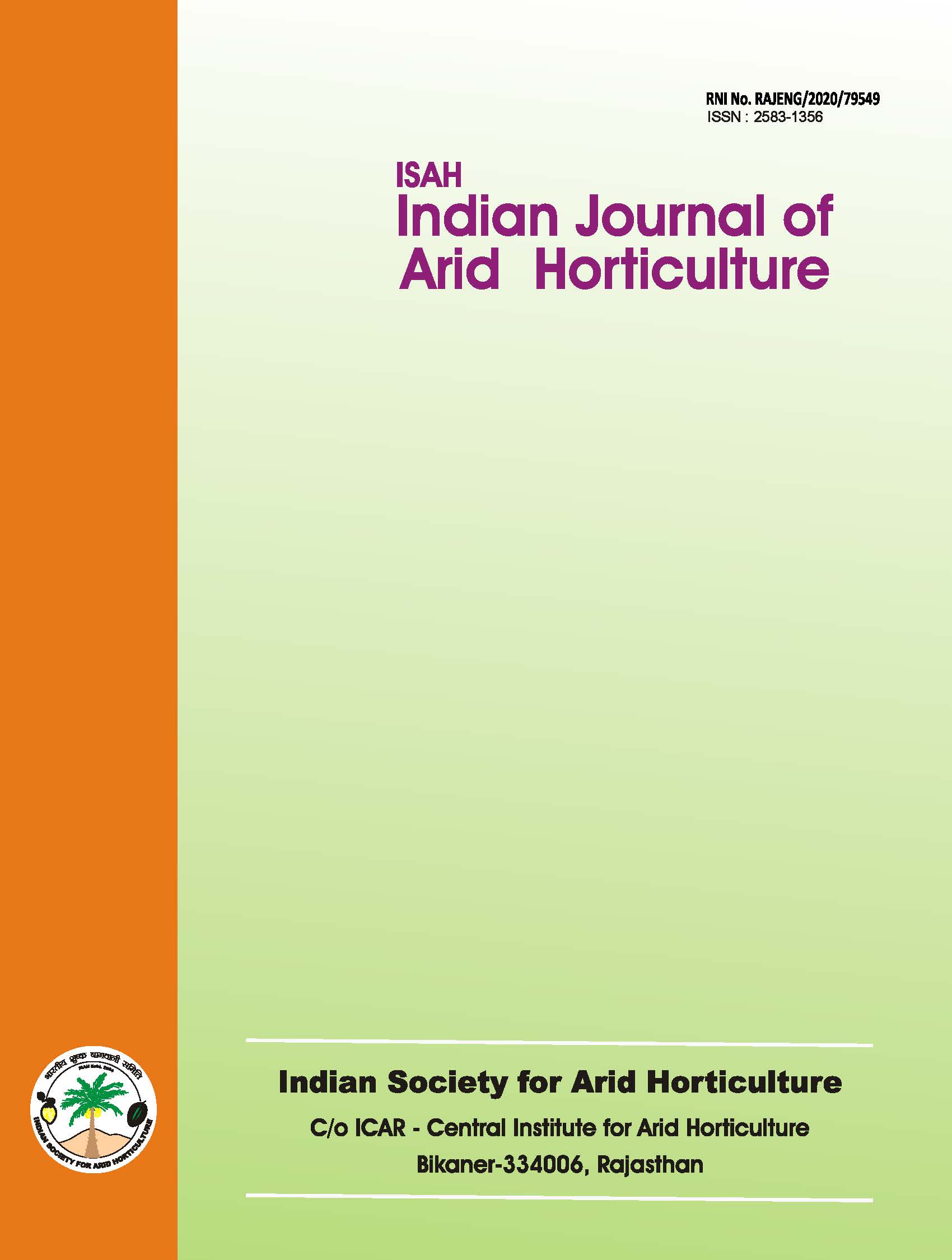Estimation of genetic parameters, character associations and path analysis for fruit yield and its components in Ber (Ziziphus muriatiana Lamarck)
Keywords:
important, MaharashtraAbstract
Arid region in India is spread over 38.70 million ha covers about 12 per cent of the total area of the country. The tracts of hot arid region are found in the states of Rajasthan (19.6 m ha) followed by Gujarat (6.2 m ha), Andhra Pradesh (2.2 m ha), Punjab (1.5 m ha), Haryana (1.3 m ha), Karnataka (0.8 m ha) and Maharashtra (0.1 m ha). Farming being a difficult task in the arid tropics, the agro-climate of such regions favours the cultivation of certain fruit crops. Indian jujube (Ziziphus mauritiana Lamk.) commonly known as Ber belonging to family Rhamnaceae, is indigenous to India and is one of the important fruit trees that can be successfully cultivated in the hot arid regions of India. The fruits of Indian jujube are rich in vitamin C, A and B complex. In Punjab it is cultivated on 2,894 ha having annual production 43,410 mt (Anon. 2006). Out of more than 90 cultivars only 11 are commonly cultivated commercially in different agro climatic regions of India (Morton 2005).Downloads
References
Anonymous. (2006). District-wise area and production of different fruits in Punjab state.
Bisla, S. S., & Daulta, B. S. (1986). Studies on variability, heritability, and genetic advance for quality traits in ber (Ziziphus mauriatiana Lamk.). Haryana Journal of Horticultural Sciences, 15(3-4), 175-178.
Dewey, D. R., & Lu, K. H. (1959). A correlation and path coefficient analysis of components of crested wheatgrass seed production. Agronomy Journal, 51, 515-518.
Johnson, H.W., Robinson, H.F., & Comstock, R. E. (1955). Estimation of genetic and environmental variability in soybean. Agronomy Journal, 47, 314-318.
Kaushik, R. A., Sharma, S., & Panwar, R. D. (2004). Evaluation of ber (Ziziphus mauriatiana Lamk.) germplasm under rainfed conditions. Haryana Journal of Horticultural Sciences, 33(3-4), 160-162.
Morton, J. F. (2005). Indian jujube. Journal of Experimental Botany, 56(422), 3082-3092.
Nanohar, M. S., Sen, N. L., & Yadvendra, J. P. (1986). Phenotypic variation and its heritable components in some biometric characters in ber (Ziziphus mauriatiana Lamk.). Indian Journal of Horticulture, 43(1-2), 42-45.
Pareek, S., & Dhaka, R. S. (2003). Correlation and path coefficient analysis of yield attributes in ber (Ziziphus spp.). Journal of Applied Horticulture, 5(1), 41-42.
Saran, P. L., Godara, A. K., & Dalal, R. P. (2007). Biodiversity among Indian jujube (Ziziphus mauriatiana Lamk.) genotypes for powdery mildew and other traits. Notulae Botanicae Horti Agrobotanici Cluj, 35(2), 15-21.
Singh, R. K., & Choudhary, B. D. (1979). Biometrical methods in quantitative genetic analysis. Kalyani Publishers, Ludhiana.
Tomer, N. S., & Singh, R. (1987). Performance of six promising ber (Ziziphus mauriatiana Lamk.) cultivars grown at Bathinda. Haryana Journal of Horticultural Sciences, 16(1-2), 52-58.

